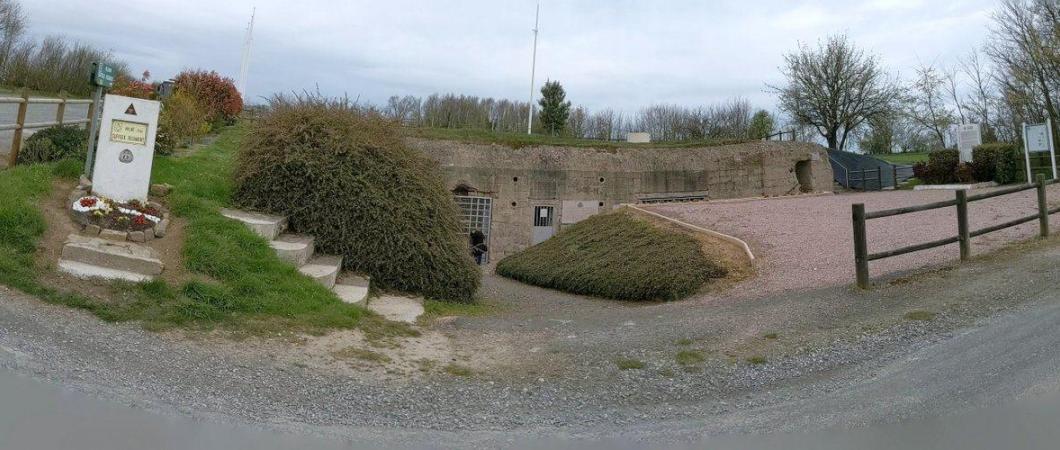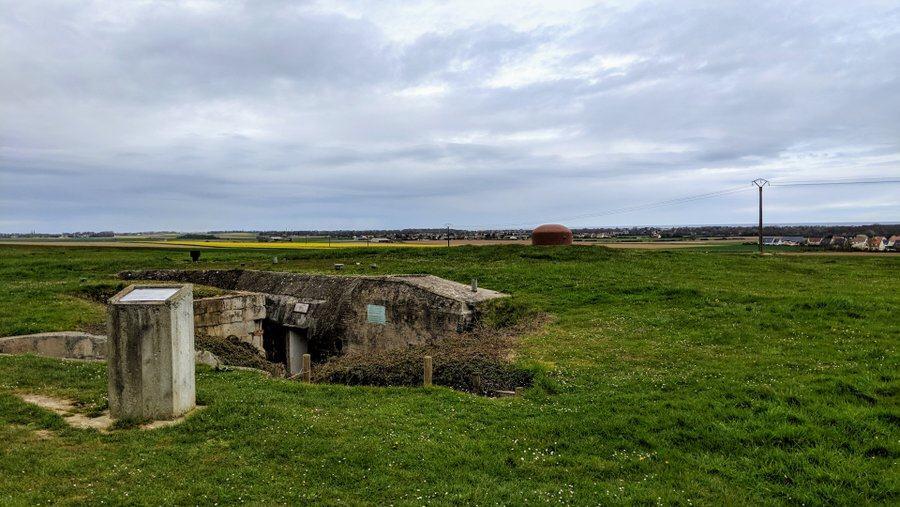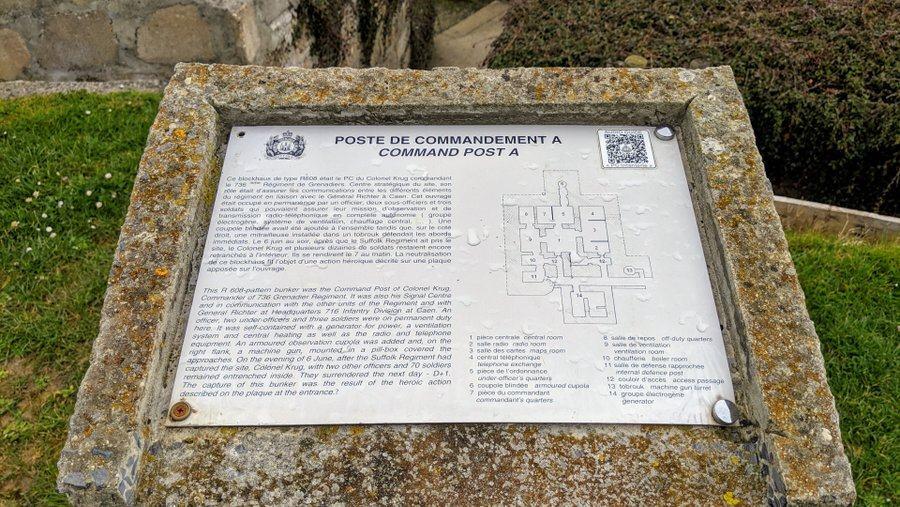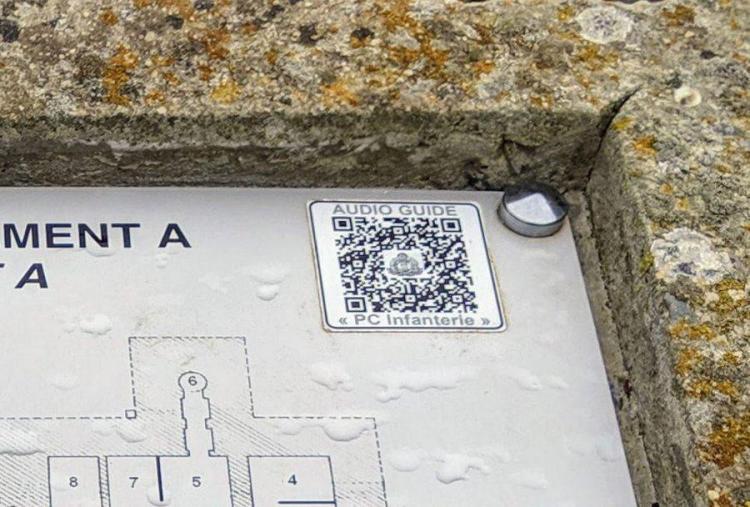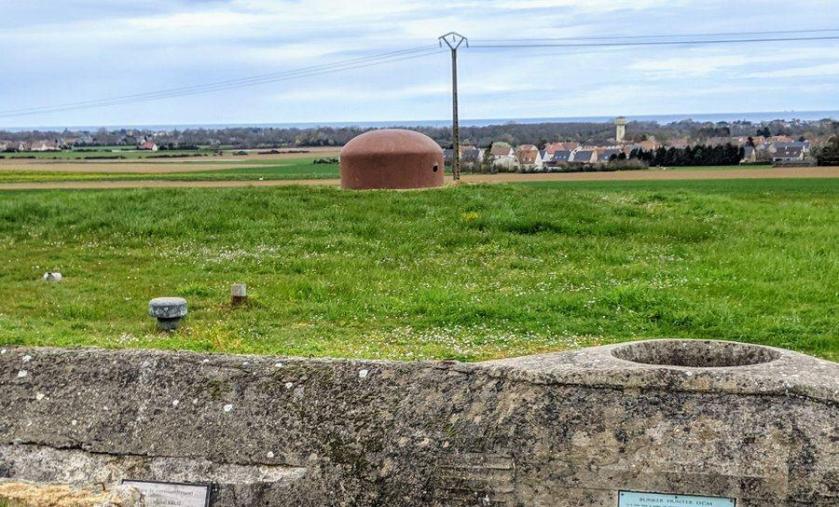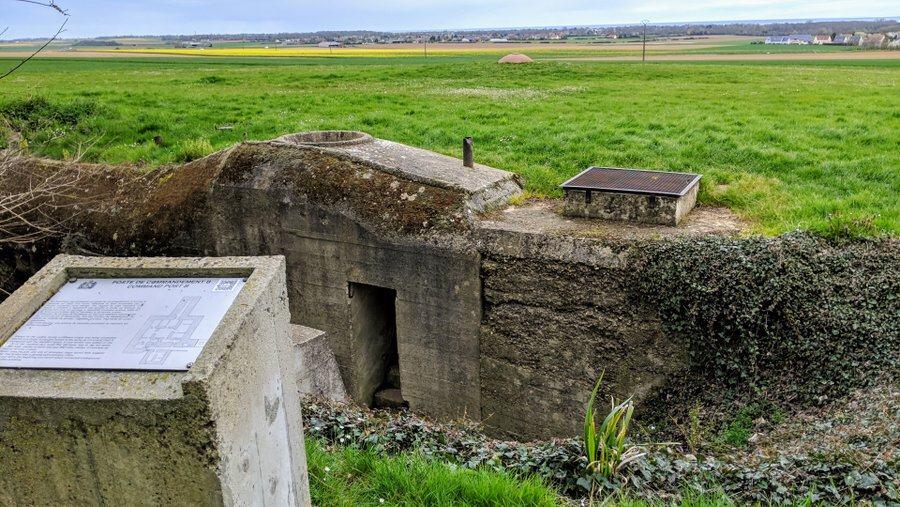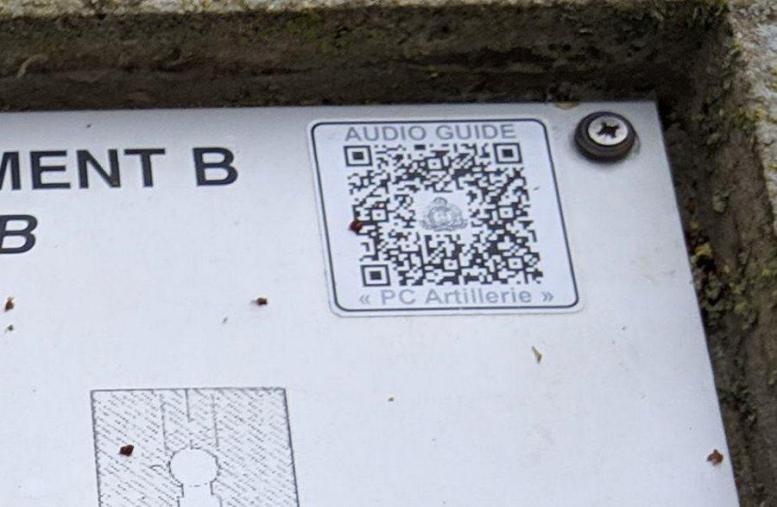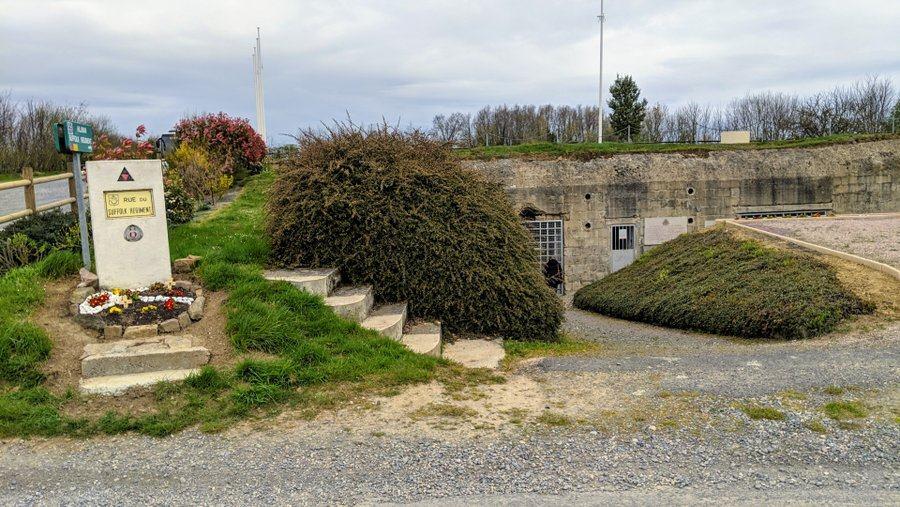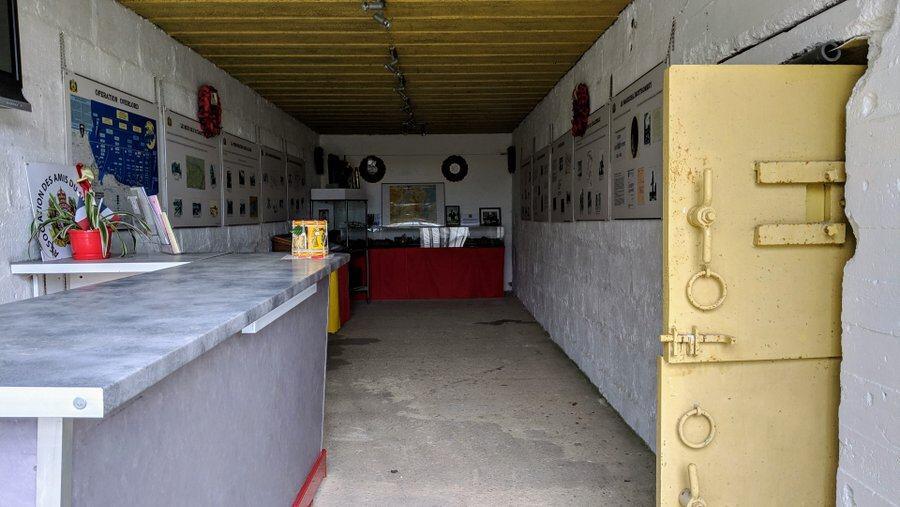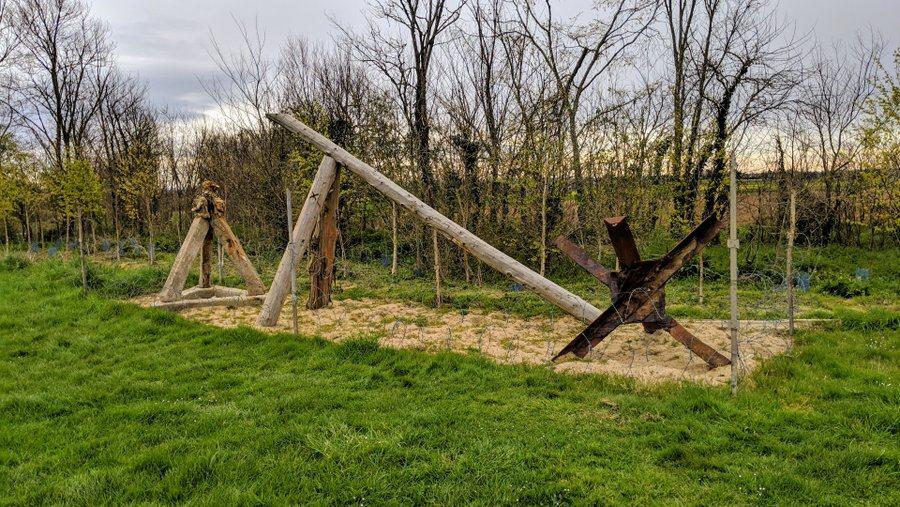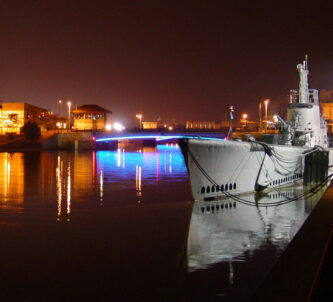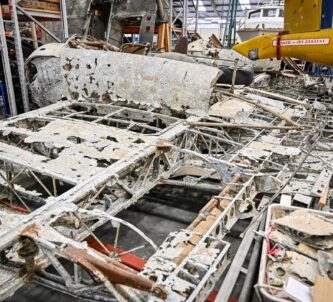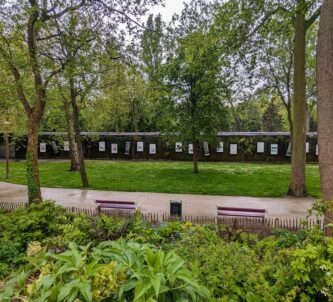The Hillman bunkers, on a hill 3.7 kms inland from Sword beach, were German command bunkers. Now they are a memorial and battlefield site.
The site was the regimental headquarters for Colonel Ludwig Krug, commander of the 736th Grenadier Regiment. From here he controlled all the infantry and artillery in the sector. So, unlike many similar ‘Atlantik Wall’ installations, this Widerstandsnest (“resistance nest” or strongpoint) didn’t house any heavy artillery.
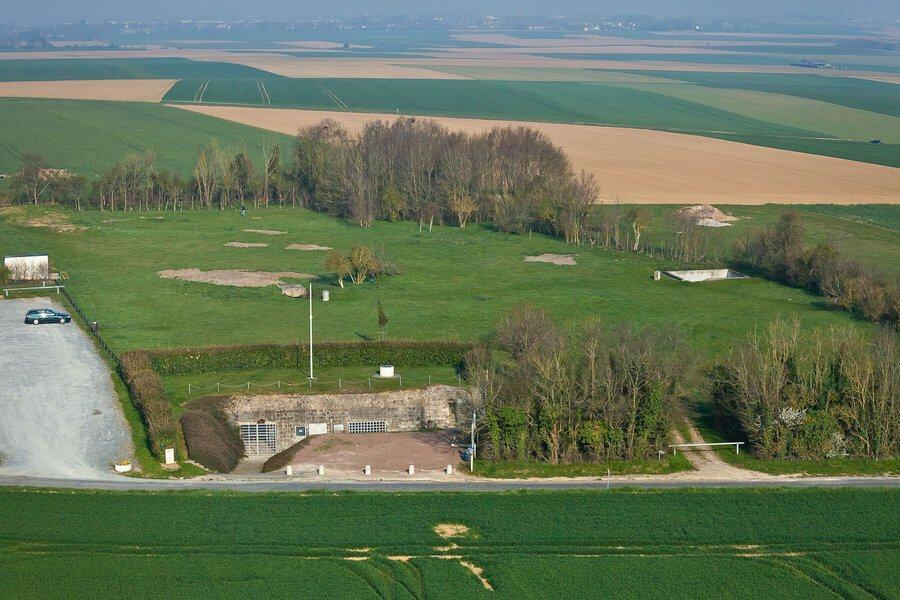
To the Germans it was Widerstandsnest 17 (WN17). To the Allies it was codenamed “Hillman”. For troops landing on Sword Beach, the primary strongpoint objectives just behind the beach were codenamed after fish (Trout, Sole, etc), the secondary objectives inland were named for car manufacturers – Morris, Daimler… Hillman.
The site, which was built in 1942, had two large underground command bunkers surrounded by a network of trenches and 16 support & defence bunkers – mostly ‘tobruk’ machine gun posts. The whole site covered 24 hectares (600m x 400m). It was significantly bigger and more fortified than Allied intelligence reports had estimated, and was ringed with barbed wire and mines. It had a garrison of around 150 troops.
Hillman on D-Day
The 1st Battalion Suffolk Regiment landed on Sword Beach just before 09:00 on 6th June. Once formed up they moved inland to attack WN16 “Morris” – a battery of four 100mm former Czech guns in R669* type casements just to the west of Colleville-Sur-Orne**. By 13:00 they had taken Morris, liberated Colleville, and had moved on to Hillman.
Not only was Hillman larger than expected, it was also unscathed. It was supposed to have been bombed and targeted by naval gunfire before the Suffolks got there, but that hadn’t happened. So assaulting it was a daunting prospect.
The first attack was made by A Company of the 1st Suffolk after engineers had cleared a path through the mines and barbed wire perimeter. However the attack was beaten off.
A second attack, this time with a softening up barrage from the Royal Artillery and tank support from the 13/18 Hussars, finally overran the site by 20:15, with the exception of the two command bunkers which proved impenetrable. Even their cupolas, with 20 in (51 cm) to 30 in (76 cm) armour, bounced anti-tank rounds from the Hussars’ Sherman Firefly 17-pounder guns. Holed up inside the bunkers were 70 German troops, who spent an anxious night surrounded by enemy forces before Colonel Krug led them out to surrender in the morning.***
The Suffolks’ losses were: 10 killed, 25 wounded.
Visiting The Hillman Bunkers
In 1989 the owner of the Garage bunker** (nearest to the road) donated it to the Suffolk Regiment to be a memorial. After that the local “Les Amis du Suffolk Regiment” association, with the support of the municipality, started clearing and restoring the other bunkers on the site.
The volunteers of the Friends of the Suffolk Regiment open up the memorial Garage bunker and the Command bunkers on certain days, but it’s not really a museum, it’s a battlefield memorial site that you can wander around at any time.
I visited early on a spring weekday and there was nobody around. Although that meant I couldn’t get inside the bunkers, the association has done a good job on the signage. So there’s plenty to get out of a visit, especially if you make use of the QR codes on the signs.
* The Todt Organisation had a series of Regelbau (Standard Designs) for bunkers, which they simply constructed as & where the German military demanded. The three biggest bunkers at WN17 (Hillman) were the two R605 design command bunkers and a rare R608 garage bunker for vehicles and anti tank guns (I believe there are only five known examples).
** Colleville-Sur-Orne was renamed Colleville-Montgomery after the war, and the section of the Route de Colleville between the village and Hillman was renamed Rue Suffolk Régiment.
*** One reason that the Hillman bunkers are significant, beyond the memory of the events here on 6 June 1944, is its role in the Battle of Normandy. The Amis du Suffolk Regiment sign at the entrance says that “Nowadays historians agree that Hillman was the most formidable obstacle in the 3rd Infantry Division (if not the whole 2nd Corps) area. They suspect that it was a factor in preventing 3rd Division from seizing Caen by the evening of D-Day as planned.” This claim is repeated elsewhere (Wikipedia) but without citation. I think one of those historians is almost certainly Andrew Stewart in his book Caen Controversy (See below), but if you know who the others are, please tell us in the comments below.
D-Day Normandy Posts
Declaration: I was visiting the area with some support from the Normandie and Calvados tourist offices. This visit was off the itinerary.
Factbox (Updated/Checked 04/06/2023)
Website:
Site Hillman – Friends of the Suffolk Regiment
Getting there:
Rue Suffolk Régiment
14880 Colleville-Montgomery
Normandy
France
It’s easiest to visit by car. There is a car park on site.
Entry Price:
None, but for tours donations are welcome.
Opening Hours:
The site is open all year round, but it is manned by the Friends of the Suffolk Regiment every Tuesday from July 1st to September 30th who operate 2-hour guided tours at 3.00 pm. (English speaking guides can’t always be guaranteed.)
They can also do pre-arranged private group tours for groups over 10 people.

